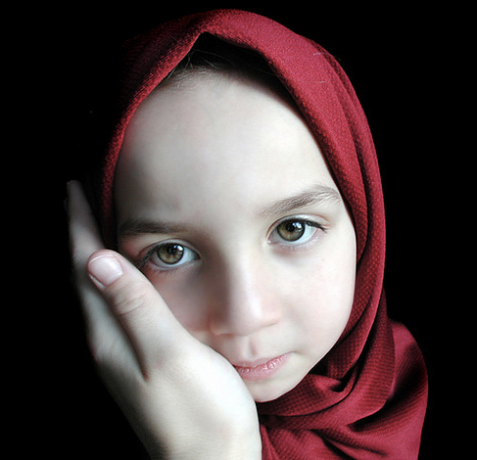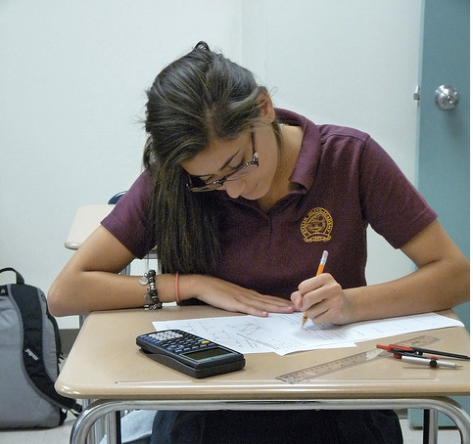
Education in this country is in crisis. For all of the patriotic rhetoric spewed during the last presidential election, in the “land of the free,” we have not yet made the connection that our children are the nation’s greatest resource and education deserves our greatest support. We do not take seriously the charge to educate all students. Some of our public schools are doing a great job, but in areas of the United States children are subjected to large classes, unskilled teachers, and unsafe school environments. Though for many school is a respite from troubled lives and overwhelmed parents, often schools are ill-prepared to give the children who most need a caring and safe environment and the confidence in themselves as capable learners needed in order to become healthy, prepared citizens.
Worse still, research reveals an alarming correspondence between poverty and school failure. With few exceptions, income level predicts academic levels in America’s schools. Data, such as test scores, can provide information that allows us to act in ways that serve change; or data can become a justification for doing nothing, blaming poor performance on “non-school” factors that we can’t change.
Data is used in public schools, organized on a top-down model. School boards make decisions that serve multiple schools, rarely able to be sensitive to the needs at each school. Well-meaning, high-level administrators and boards create policies that address the needs of the masses. Sometimes those policies support the schools in their districts; most of the time they do not. Federal attempts to create “one size fits all” policies are even more misguided. Current federal policies based on “research” overlook the fact that much of the research in education is based on assumptions that do not apply to all schools and all children. Statistics can lie; (consider the average of one’s feet in the freezer and one’s head in the oven—on average, just right) for children are individuals, not numbers.
Ronald , Nathan, and Hugo are three fictional boys who live in Los Angeles. Ronald, attends a public school downtown. As an African-American child, born of a mother who struggles to support him and his three brothers, his chances of succeeding toward high school graduation are slim and toward college, slimmer. If by some chance he does make it to college, benefiting from one of the few non-profit, innovative support systems , his chances of completing college are minimal, according to latest research.
Nathan’s future is rosy. Growing up in a suburb of Los Angeles, Nathan attends public school as well. His school boasts a “booster club” in which members of the school community raise $300,000 a year, allowing the school to hire extra teachers to supplement programs like art and music and to reduce class size.
Hugo is the luckiest of the three; he attends one of the city’s many private, independent schools. Although a student whose tuition is supported by partial scholarship, Hugo’s education is rich in scope, and his peers support his learning. In all likelihood, he, like Nathan will attend college, graduate, and find a wonderful job.
Ronald, Nathan, and Hugo represent aspects of what has become known as “the achievement gap.” Ronald’s and Nathan’s achievement are measured by state testing that depicts individual and school success levels. In fact, the quality of the school is measured by the score.
Curriculum at Ronald and Nathan’s schools correspond directly to what is tested on the state tests, with math and language arts occupying the majority of time. Subjects such as social studies and science are evaluated sporadically during a child’s progression through grades K-12, and tests in those subjects focus on multiple choice responses about content.
In current discussion of the “achievement gap,” conversations focus on students such as Ronald and Nathan, and school programs are aimed at and judged by API scores, the aggregate of student scores at a school. No one would argue that a gap exists and must be closed. All students deserve good education. But do we all have the same definition of a “good” education? And why have test scores on one kind of test become the measure of what is “good” in education?
Viewing Hugo’s school expands the perspective of the discussion of the gap. Those students who attend independent schools are receiving an education that eclipses both Ronald’s and Nathan’s school experiences. Parents of public school students visiting good independent schools are often shocked at the difference between what is considered a good public school (one that boasts high test scores) and an independent school. I know I was.
March, 1989, Westlake School for Girls
As a young mother, I loved the idea of public schools and free education, and I hold that perspective today as well. Although my husband taught at a private school, I fought the very idea of any child of mine attending a private school. My own three years as a public school teacher, prior to becoming an “at home” mom, solidified my belief in neighborhood public schools as anchors of community and democracy. I saw public schools as a great leveler, providing my children with the opportunity to expand their world view of cultures and races, as I eschewed my own segregated education of in an isolated bastion of whiteness. I sent my oldest child to Westlake School for Girls. It was a “no-brainer:” I saw what the school offered and compared it to her public magnet school. Huge step for a person committed to public school.
Neighborhood Public School Districts
I began my teaching career at a well-funded school in a tiny beach district, and although my 28 kindergarten children had a slim slice of my attention within a three hour school day, the day was filled with enriching experiences for them. The school board decided to change the class size for all elementary grades. My kindergarten roster grew from 28 to 33 children reflecting increased class size across the district, designed to meet the challenges of shrinking enrollment resulting from skyrocketing property values that changed district demographics and new laws that limited spending in affluent school districts. A member of the school board supported the increase of class sizes as a solution to the districts shrinking enrollment, based on research of the day that substantiated the idea that class size did not matter; a “good” teacher could “disseminate instruction” (to quote the board member) to 40 students.
In 2012, the Assistant Superintendent of public instruction in Texas echoed the board member’s sentiment, wondering what connection ipads and smaller class sizes might have on the “dissemination of academic instruction.” Misapplication of research findings holds true today. Students in Texas may be in for a long, disappointing ride, as their districts attempt to meet student needs while placating the views of politicians whose narrow perspective on education stilt student experiences and derail their futures.
Out of what became a sad mess of public educational reality, developed a menu of educational choices, designed to provide parents who could afford options, alternatives for educating their children. Religious education, secular independent schools and later, the home school movement provided parents more “hands-on” input in their children’s lives. Seeking a way to better educate their children, parents attempted to create private educational opportunities for their children in spite of the taxes they already paid to the public system.
Each of these solutions provided an advantage over public education while at the same time requiring a commitment of time and money. Religious schools provided focus on character development and spiritual affiliation; independent schools with additional accreditation and oversight implemented standard practices for board governance and administrative practices. Some parents began to keep their children at home for schooling so they could control the content and environment of instruction.
To evaluate the effectiveness of instructional programs, school districts and state board use standardized tests to establish a uniformly applicable set of criteria. Unfortunately, many of the goals of education (student confidence, character, creativity, flexibility, and resilience, safety, and “belonging” to name a few) do not conform to methods of evaluation that can be applied on a large scale. The standardized tests themselves, therefore, are establishing an extremely narrow band with which to judge the success of a school’s program.
Charter Schools
What seemed like an ideal solution to the challenge of education in America began appearing across the country in the late 90’s: charter schools. Charter schools seemed to blend the best of both options of private and public education. Charter schools are public schools governed by a board, created by private citizens or business affiliations, and sanctioned and evaluated by a state, county or city school district. Just as there are many kinds of public and private schools, charter schools represent a range of philosophies, environments, and methods of implementation. Some charter schools, like the KIPP family of schools, have strict policies for the enrollment and participation of its students and teachers. Some, like KIPP, have evolved to be the size of school districts. A key attribute of independent schools, local school autonomy, may or may not be an attribute of a charter school. Many charter school leaders believe that a business model is the “saving grace” of education and should dominate the charter school movement, or that staff who attended ivy league schools create the best pool of talent.
As a movement, charter schools are not yet 20 years old; an adolescent in the field of education. There is much to try, fail, and learn as the movement matures. If nothing else, charter schools represent, at best ,“American ingenuity”, a free market approach to education, and independent thinking. At worst, charter schools run the risk of repeating the errors that plague our current public school system or creating new errors as business-trained non-educators assume leadership roles. A recent report by Stanford University attempts to summarize the success of charter schools. The report points to specific benefits and challenges to the success of charter schools, as seen by test score data.
The problem with evaluating schools by test scores alone is that Ronald and Nathan are left out of the equation. Ronald and Nation are the point of education, as are their parents, and their needs should be front and center, not hidden within pages of state testing data.
Building Community in Education
When one creates a school, one must consider not only how children will learn but how to structure the community in a way that supports parents, honors their fears, and gives them appropriate outlets for their needs to be involved in their child’s education. The Harlem Children’s Zone schools, developed by Geoff Canada, are examples of combining educational reform within a community framework.
Ideally, schools are a reflection of a triangle model, with a joint effort of staff, parents, and students. At the top, educators, whose job it is to stay current and informed, should be the leaders at a school. Parents, who have needed information about their children’s abilities, needs and skills and who have opinions worth hearing, not only contribute this information, but ideally contribute time and money to augment that which is provided by government or tuition. Students, who are the real consumers day to day, form the last third of the triangle. Their voices should be heard in concert with the adults who care for them. The triangle model requires the participation of all three constituents, each with a particular role. In an ideal setting, there is mutual respect and understanding of the roles of each, as well as a clear understanding of the boundaries among constituents. Mutual respect and understanding requires commitment to processes that cultivate social norms and community expectations, often neglected in the focus on scores and day-to-day school issues.
Charter school developers are bravely experimenting with models. Some models exchange financial support for privilege, creating an opportunity to extend programs. Some charter models hold boldly to the belief in developing the leadership and participation of all community members. Teachers, principals and other staff give mightily of their time, energy, and creativity, often experiencing burnout as they attempt to create the learning environment enjoyed by Hugo–with meager resources.
There are no easy answers, and if we are to move forward we need to accept the current reality:
• Many of our public schools are held hostage by antiquated bureaucracies, and board/union political agendas.
• Some of our public schools are doing a great job despite limitations.
• Student in independent schools are getting an education that makes use of modern research and extended funding, and children who attend them are at an advantage.
• Charter schools are an option for some parents who feel their local schools do not serve their child’s needs.
Wisdom dictates that we consider a wide range of data to discuss and develop our public educational system. As a nation, we do not seem to do well with dissent, despite the examples of the founding fathers. We make quick judgments, discredit partial successes, and fight rather than listen. Our children deserve better. It’s time to bring all voices to the table to hear what is working and to move our schools forward in ways that provide commonly understood “good schools” for all.
What do you think? What are our next steps? What are your and your child’s experiences? Let’s start the discussion!
(photo courtesy of http://www.flickr.com/photos/aoisakana/288099156/)
 “The voice of the sea speaks to the soul. “– Kate Chopin
“The voice of the sea speaks to the soul. “– Kate Chopin


